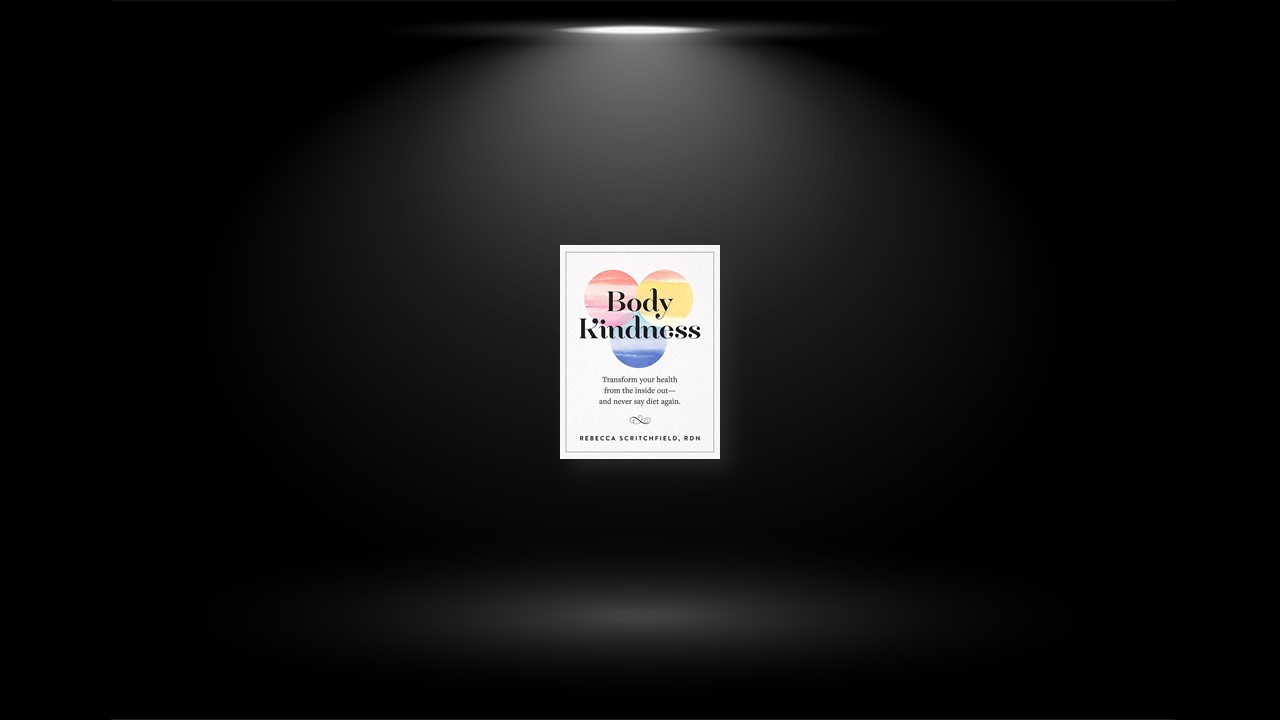Choosing Body Kindness
Each positive choice you make is a little investment in your health and happiness. When you use the power of choice, you can change how you feel in order to influence the next decision you make. Choices have a way of building on one another, giving you more energy to take care of what’s important and helping you avoid choice traps—situations that can sabotage your decision-making. Body kindness choices should fit your personality and help you feel good. Thankfully, body kindness isn’t about making perfect choices all the time. It’s about connecting with your body to make loving and caring decisions that eventually take over your life in the form of enjoyable habits.
Love: Do what you love. Choices that fit your interests, personality, and preferences are good choices and they are the best way to express self-love.
Connect: Connect to your body. Be flexible enough to change your decisions based on how you feel, what you think your body needs, and what matters to you most.
Care: Every health choice you make, big and small, is evidence that you care about improving your well-being.
The Body Kindness Cleanse
Break up with your scale. Write a note to your scale, saying something along the lines of “I love myself more than you. You’re the manipulative frenemy I never wanted.” Tape the note on your scale. Store your scale away. Or skip the letter and take a hammer to your scale. (Stress release is a bonus!) Donating it to Goodwill is another option.
Cleanse yourself from “diet talk.” This includes conversations with friends and family, and avoiding certain websites, social media, articles, TV shows, etc. Unsubscribe from emails that make you feel bad about yourself and clutter your psyche. Put magazines in the recycling bin or donate them to the nail salon.
Put away the diet plans. Trash or donate anything that resembles a weight loss program. Forget about those calorie-counting, low-carb, fat-free diet books. This stuff does not help you be kind to your body. Replace them with recipes and meals you enjoy.
Banish diet foods. Get rid of anything that has been altered to look like a “health food.” Double-fiber cookies, spray butter, those low-carb “miracle noodles” that reek of rotten fish—say good-bye to all of them. Replace them with a variety of wholesome foods you crave.
Hide your calorie trackers. Our accuracy for estimating calorie intake stinks, and it’s a major distraction from sensing your body’s natural ways of regulating what you eat.
Shift energy with sage smudging. Burning sage—aka smudging—is an ancient practice to get rid of negative energy. You can smudge yourself, your house, your kitchen, or any sacred space that needs to be rid of diet demons. You can also pray, give a blessing, or ask someone to do it for you. These rituals can boost motivation and confidence as you start fresh.
Eating with Body Kindness—Free Yourself from Food Rules
Imagine being adventurous and curious about the taste of a new dessert without saying, “I’ll need to make up for this tomorrow!” Keep in mind, being flexible does not mean you don’t give a crap about what you put into your body. It means you understand that food is only part of healthful living and you trust that there’s room for give-and-take. When you say good-bye to food rules, you say hello to freedom and peace. Feeling guilty for eating is like feeling guilty for being happy or punishing yourself for having an afternoon of fun with a friend.
Body kindness food choices are personal decisions, and they aren’t up for judgment or unsolicited advice. Listen to your heart and body and then embrace your preferences unapologetically. Give up the “virtue” of all choices and start thinking about the choices you really want to make. Eat cake if you want cake and kale if you want kale, but don’t make it about anything more than it really is: just one of the many millions of food choices you are going to make in your lifetime. You’ll enjoy the cake and the kale much more when they aren’t tied to your worthiness.
Fitness for Your Life—Choose What Works for You
Fueling your body helps you perform in all areas of life—and your workout routines are no exception. A well-timed meal or snack serves as fuel for your activity; it also helps you perform your best, recover optimally, and get the most out of your exercise. Ideally, meals or snacks should take place thirty to ninety minutes before physical activity. If you’re within an hour of a workout, you don’t need much; just a piece of fruit or a cup of 100 percent fruit juice or sports drink would do the trick. A mix of foods that provide carbohydrates and proteins will deliver the maximum support for both energy and recovery, i.e., yogurt with granola, oatmeal with peanut butter, egg and avocado toast, smoothies. Sometimes chocolate milk is an upstanding, quick and delicious choice. Don’t exercise on empty. Your body and mind will feel the deficit. Respect your body by giving it some fuel for the fitness work you ask it to do.
Do something you don’t believe you can do—a real challenge that interests you even if you do it only once, like a race. Find a fitness edge that feels challenging in a good way. Take up functional fitness, where you can learn exercises that help you do more in life—like upper body strength to support your passion for gardening, or movements to help build stamina for your upcoming European vacation where you’ll do lots of walking and hiking, or take a self-defense class series that teaches you something useful.
Sleep—The Secret Superpower for Spiraling Up
Sleep is mind-body rejuvenation that helps you become your best—inside and out. There is no substitute. To maximize your energy, positive mood, and healthy body functions, practice good sleep hygiene (self-care habits that support high-quality rest). When you cheat yourself on sleep, your brain’s decision-making ability is comparable to a drunk person’s. If you don’t want to spend your days with the brain of a freshman on a Sunday morning, you’ll make sleep a priority. Your body already has built-in mechanisms for getting good sleep and making up for poor sleep. It’s a matter of doing what you can to work with these systems and having a body kindness backup plan for when you don’t sleep well.
Reserve your room for sleep and sex. Get rid of anything in the room that does not promote these activities. Vibrators can stay (obviously), but TVs are out. Keep only the things you really need in your bedroom.
Make sure your bed is comfortable and clean. If your mattress isn’t comfortable, or if it’s older than about seven years, make an investment in your sleep quality with a new mattress. This isn’t a splurge; it’s a necessity, and good sleep has enough financial benefits to help justify the cost. Wash your bedding every week to prevent the natural accumulation of allergens and dust mites, which can lead to poor quality sleep.
Give yourself a bedtime. Attempt to go to bed early enough to be asleep for about eight hours. Stop using any blue-light emitting screens at least an hour before bed. Blue light delays your body’s release of the melatonin that lulls you to sleep.
Keep your nightstand clear and organized. All you really need is a glass of water and a book—a real paper book—or a journal and pen. NO screens. Yes, this includes your smartphone. If it acts as your alarm clock, keep it on the other side of the room.
Add white noise. If noises awaken you in the night, use a fan or a white noise machine. If you like falling asleep to music but it occasionally wakes you up, set a timer so it turns off automatically.


